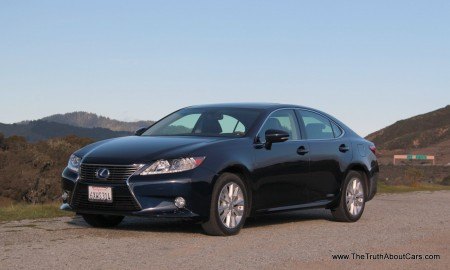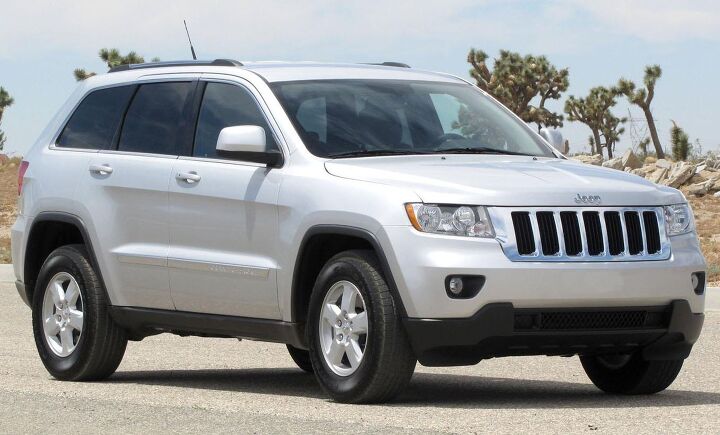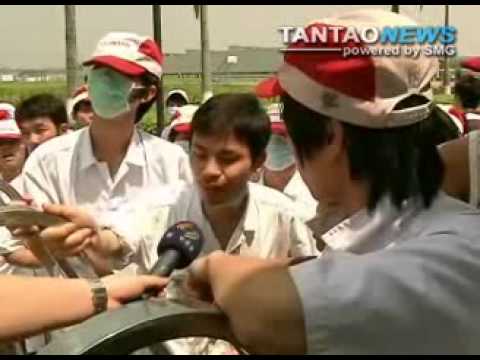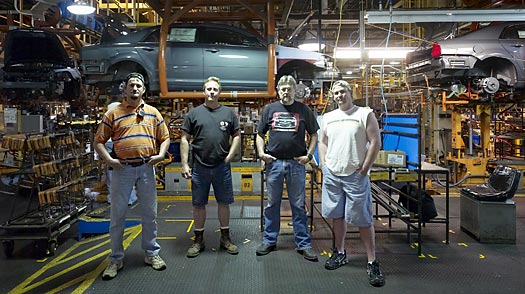#assembly
Lexus ES Production Moving To Kentucky
Production of the Lexus ES will move from Toyota’s plant in Kyushu, Japan to a plant in Georgetown, Kentucky, where its platform twin, the Toyota Avalon, is built.
Analysis: VEBA, The UAW And The Warren Walkout
The 12-person protest that took place at Chrysler’s Warren, Michgan truck plant got little notice in the automotive news cycle, save for a couple of mentions on the usual aggregators. In truth, it’s not the juiciest story to sell in this click-driven wasteland, though these stories tend to raise the most interesting questions. This example highlights an issue that is going to dog the UAW for some time – how will the UAW control their workers when they are also the owners?
UAW Targeting Nissan's Mississippi Plant
Tennessee is so 2011 for the UAW. The hot new locale for foreign plant organizing campaigns is Mississippi, where the UAW is trying to organize workers at a Nissan truck plant.
Jeep Grand Cherokee To Get Diesel In 2013, 1,100 Jobs Created
Is China's Cheap Labor A Thing Of The Past?
The prospect of a Chinese auto industry growing at insane speed thanks to a booming market and resiliently low wages has long kept auto industry execs up at night, most notably inspiring Sergio Marchionne’s acquisition of Chrysler. But basic economic principles dictate that you can have a high rate of growth or low wages… but not both. Growth inevitably drives inflation, which drives up wages, which in turn slows growth. And according to a report in the Wall Street Journal [sub], that dynamic is already taking hold.
Jae-Man Noh, head of Hyundai’s joint-venture operations in China, said average manufacturing-worker wages in China—about 27,000 yuan ($4,200) a year per worker in 2009—are likely to double by 2015 from current levels.
Auto makers are expected to be affected as much as other industries by the trend, if not more, Mr. Noh said, adding that wage costs for many foreign auto manufacturers already have doubled in less than a decade. He said that a rival foreign auto maker that Hyundai has researched has seen worker wages in China rise to 49,000 yuan a year per worker in 2010, up from 24,500 yuan a year in 2003.
“We need to let go of our perception that the Chinese market is a low-cost production base,” Mr. Noh told a group of reporters at Hyundai’s office in Beijing. He didn’t offer specifics on Hyundai’s wage costs in China.
And though the laws of supply and demand made this development inevitable, the story of the decline of China’s low-wage manufacturing base is a lot more interesting than you might think. After all, economic and historical forces may seem mechanical in the abstract, but on the ground level they work in dramatic, disruptive ways.Honda Joins The Guanajuato Gold Rush, Toyota On The Way?
Around the time of the founding of the United States, the Mexican state of Guanajuato became home to of the one of the biggest silver mines in the world, which produced as much as 2/3rds of the world’s supply of silver at its peak. Today it’s not precious metal that’s driving Guanajuato’s booming economy, but cars, as the world’s automakers flock to Central Mexico. Between 2005 and 2008, GM, Ford and Michelin dumped $1.8b into production in the state, and the expansion is still picking up steam. In the last year, Volkswagen invested $800m in engine production capacity in Silao, Pirelli built a $210m facility and Mazda just revealed it would build a new compact car plant there in June. Toyota is said to be the next to set up shop in Guanajuato, but for the moment Honda is the latest automaker to announce new operations in Guanajuato, as Automotive News [sub] reports the Japanese automaker will spend $800m on an assembly plant there. Honda, which is fleeing a strong yen which has battered Japanese exports, will start building 200k subcompacts per year in 2014. Clearly Guanajuato’s got it’s automotive mojo flowing… but are the days of new Japanese transplant factories in the US over? Is it only a matter of time before the coyotes start smuggling Detroiters into Silao, Celaya, and the Puerto Interior??
Bailout Watch 577: Auto Task Force Redlines GM Production
The WSJ reports that GM has added a third shift to its Fairfax assembly plant at the request of the US auto task force. The Kansas City plant will now build 6,300 vehicles a week working 21.6 hours a day, up from 4,500 units per week working 14.5 hours per day with two shifts. The move reportedly makes Fairfax the first US auto plant to run three shifts on a routine basis. According to the WSJ,
the auto task force that oversaw GM’s reorganization last spring was startled to learn that the industry standard for plants to be considered at 100% capacity was two shifts working about 250 days a year. In recommending that the government invest about $50 billion in GM, the task force urged the company to strive toward operating at 120% capacity by traditional standards.
Why? That’s not exactly clear. The potential downsides of the move are far easier to identify.





















Recent Comments